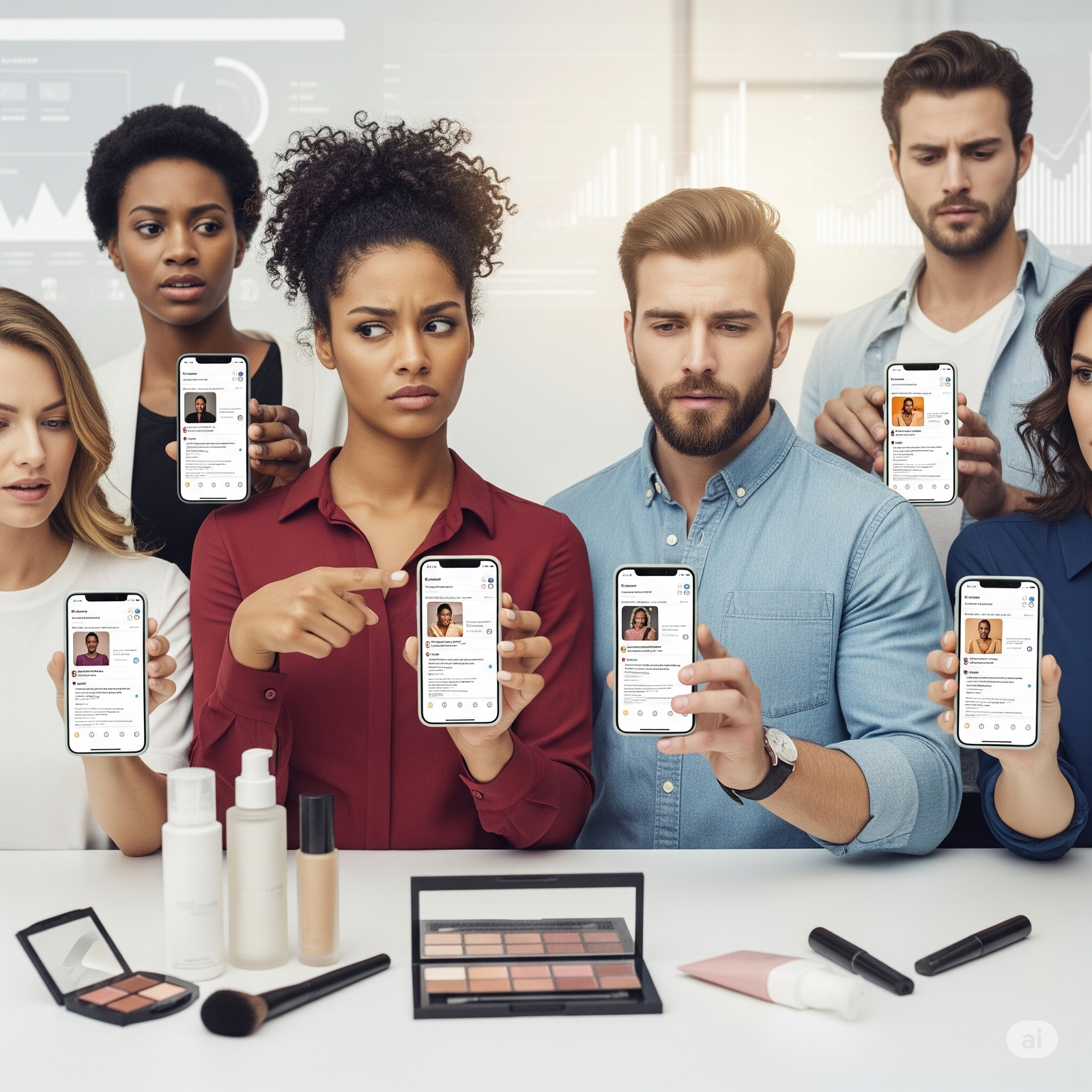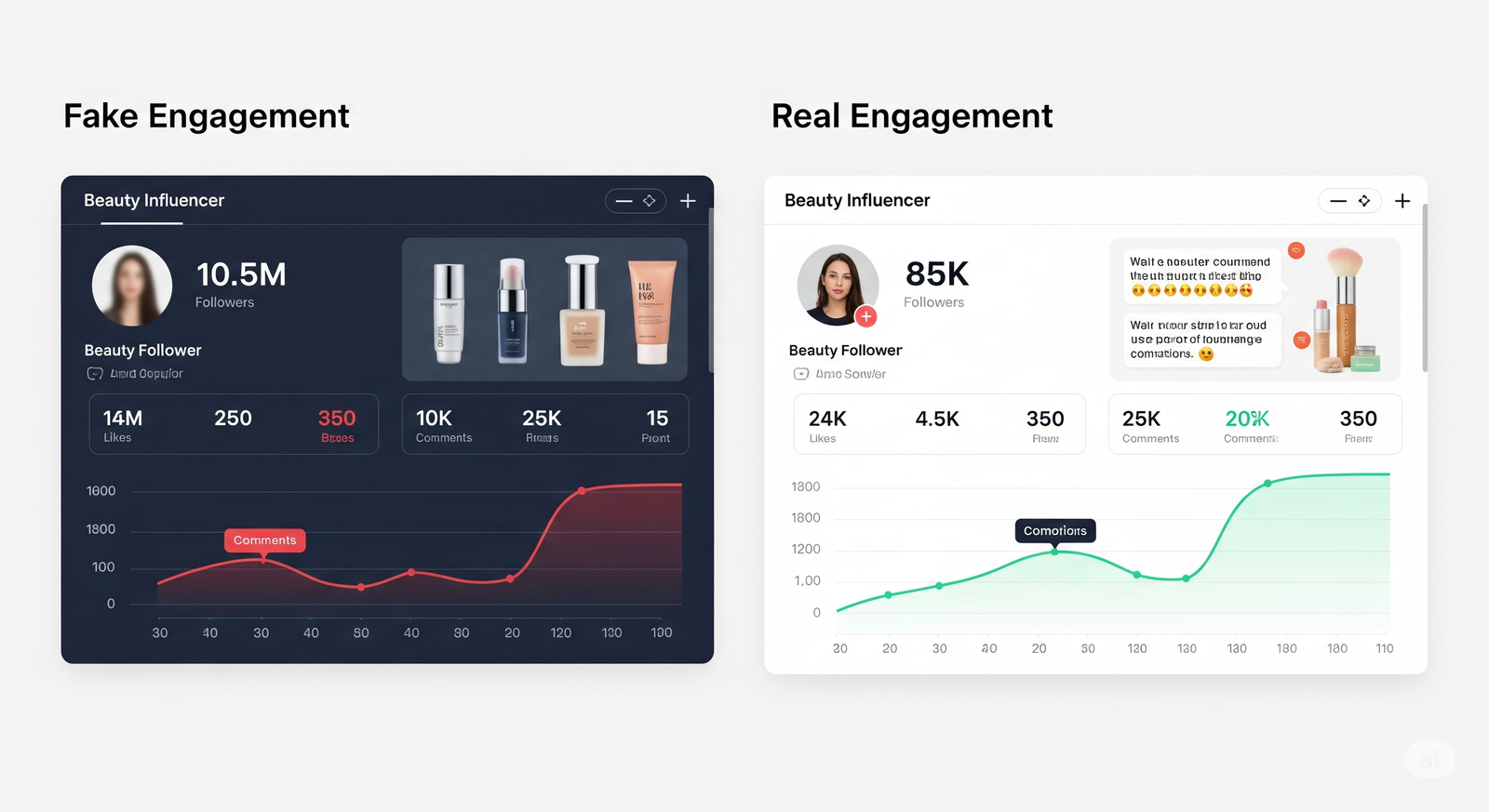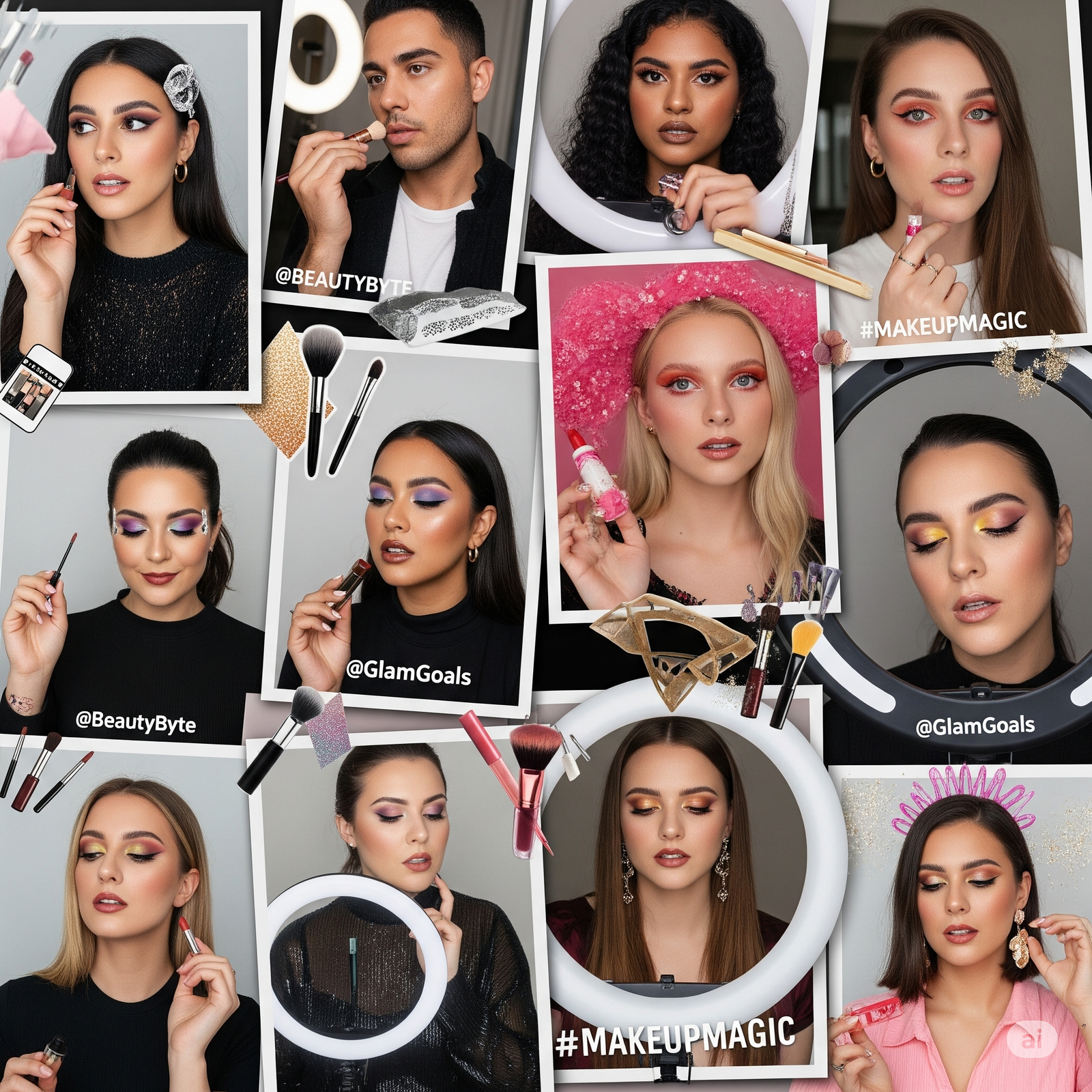Navigating Influencer Fraud: How to Protect Your Beauty Brand
Protect your brand from influencer fraud with smart detection tools. Learn how Admigos helps beauty brands vet creators, spot fake followers, and drive real ROI.
31 Jul'25
By Niharika Paswan


Navigating Influencer Fraud: How to Protect Your Beauty Brand
In the world of beauty marketing, influence is currency. But not all influence is created equal. As influencer marketing budgets grow and platforms like Instagram and TikTok dominate discovery, the threat of influencer fraud becomes more real and more costly. For beauty brands, the challenge is twofold: how to detect fake followers and inflated engagement, and how to ensure their campaigns are backed by authentic voices that drive trust and ROI.
This article explores the state of influencer fraud in beauty, how brands can proactively vet creators, and how platforms like Admigos are equipping teams with data tools to prevent wastage and build authentic influencer campaigns.
Why Influencer Fraud Hurts Beauty Brands

Beauty is one of the most visually driven and influencer-powered industries. That’s exactly why it's also one of the most targeted by fake follower networks, engagement pods, and bot-based growth tactics. When a brand invests in an influencer partnership, it expects three things: reach, credibility, and conversion. Influencer fraud sabotages all three.
- Wasted ad spend: A campaign may look like it performed on the surface, but a deeper look shows most impressions came from ghost accounts or bot engagement.
- Damaged brand trust: Consumers are becoming more skeptical. Partnering with a clearly inauthentic creator can backfire, eroding brand perception.
- Skewed data for future campaigns: Fraudulent influencer performance distorts benchmarks, leading to misinformed decisions in future activations.
- A 2023 report by HypeAuditor found that more than 55% of beauty influencers on Instagram had suspicious engagement activity, often from bots or follow-for-follow schemes. This makes clear how critical it is to go beyond surface-level metrics.
The Most Common Types of Influencer Fraud
Before detection, brands must understand the patterns that define influencer fraud. Some of the most widespread tactics include:
- Fake followers: Purchased in bulk from bot farms to inflate follower count artificially.
- Engagement pods: Groups of influencers who like and comment on each other’s posts to trick algorithms.
- Comment bots: Automated comments like “Love this!” or emoji chains to inflate post interaction.
- Faked demographics: Manipulated audience breakdowns to appear more relevant to a brand’s target market.
- Story view inflation: Artificial story views from non-active accounts, boosting vanity metrics without impact.
- Admigos’ influencer fraud data shows that these patterns aren’t limited to micro-influencers. Even mid-tier and macro creators can manipulate appearance metrics, making it essential to use vetting tools before partnerships.
How Admigos Detects and Prevents Influencer Fraud

At Admigos, influencer fraud isn’t just a flag, it’s a metric tracked in real time. Using proprietary fraud-detection algorithms, Admigos evaluates influencers across six key trust signals:
- Follower authenticity ratio: Analyzes spikes in follower growth and origin of accounts.
- Engagement quality scoring: Flags repetitive or bot-like comments and inconsistencies between likes, saves, and shares.
- Audience geography match: Cross-checks claimed audience countries with actual data.
- Past brand collab outcomes: Uses Admigos campaign archives to assess true ROI from past brand partnerships.
- Bot-to-real follower ratio: Scans for known bot account interactions.
- Sentiment tracking on content: Measures tone and community reception over time.
These systems help brands avoid high-risk creators before signing deals and also allow them to monitor live campaign performance for unexpected fraud signals.
Red Flags Brands Should Watch Out For
Even without tools, marketers can still spot common fraud markers if they look closely. Here are signs a creator may not be authentic:
- Sudden jumps in followers overnight
- Low number of saves or shares despite high likes
- Repetitive or vague comment threads
- Mismatch between audience location and the influencer’s claimed niche
- Lack of genuine community interaction in comments
- No visible feedback or UGC from past collaborations
Working with creators who pass these checks and are verified ensures stronger brand safety and better ROI. GRIN outlines nine crucial red flags in influencer marketing and how brands can identify and address them before it’s too late.
Building Authentic Influencer Campaigns That Drive Results
Beyond avoiding fraud, the ultimate goal is to build campaigns that perform. This comes down to creator fit, alignment with values, and trustworthiness in content creation. Beauty brands succeeding in influencer marketing today share a few strategies:
- Prioritize niche creators over inflated follower counts: Niche skincare creators with 20K real followers often outperform macro influencers with fake reach.
- Track story-level insights, not just post metrics: Admigos helps brands dig into swipe-ups, DMs, and sticker engagement.
- Use third-party platforms to validate creator data: Never rely on screenshots from influencers, get verified numbers.
- Work on longer-term collabs: One-off posts feel transactional. Brands that work with creators over multiple months build stronger community trust.
- Incentivize authenticity: Encourage creators to show their skin texture, routine, or honest review over polished ads.
- In a deep dive, NINJA explores the rise of fake influencers, revealing how to spot them and the smartest strategies to avoid falling into their trap.
Framework for Safe Influencer Collaborations

To help beauty brands reduce fraud risk, Admigos recommends the following 5-step influencer vetting framework:
- Verify follower authenticity Use third-party tools like Admigos to flag bot accounts.
- Check engagement health Look at engagement rates and types (saves, shares, comment quality.
- Review past campaigns Ask for outcome data or UGC evidence from previous beauty collabs.
- Match audience geography Ensure the creator’s reach aligns with your target region.
- Score sentiment Use sentiment analysis to gauge how the creator’s audience receives beauty-related content.
Admigos clients can automate this process with real-time scoring dashboards, making creator discovery both faster and safer. ScienceDirect outlines a practical roadmap for managers, helping them build more effective influencer collaborations and avoid costly missteps
Rebuilding Trust in a Post-Fraud Landscape
Influencer marketing in beauty is not going away. But what will go away are vanity metrics and unverified collabs. As the industry matures, ROI-focused campaigns driven by authentic engagement and verified trust will win. This is where Admigos stands out, not just as a detection tool, but as a strategic partner. From creator sourcing to post-campaign sentiment analysis, the Admigos influencer engine powers smarter collaborations that are data-driven, fraud-proof, and performance-ready.
Beauty brands investing in influencer marketing should stop gambling on vanity metrics. With tools like Admigos, fraud is no longer a guessing game, it’s a solvable problem.
— By Niharika Paswan
Winning the Micro-Influencer Game for D2C Beauty Brands
How small creators deliver major results in todays crowded beauty market”and how to scale smart.

Sustainable Packaging That Sells: Eco Meets Aesthetic in 2025
Explore how sustainable beauty packaging in 2025 blends eco materials with aesthetic appeal. Backed by Admigos data on consumer trends and innovation tracking.
